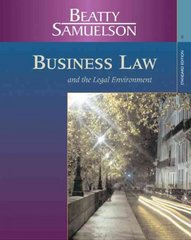Question
In a two-person, two-product economy, both products are labeled like X and Y and the two consumers are called A and B. Let XA, for
In a two-person, two-product economy, both products are labeled like X and Y and the two consumers are called A and B. Let XA, for example, denote the consumption amount of good X per person A. Each of the two individuals has initial endowments of one unit of each asset. The preferences of a are given by the utility function
UA(XA,YA) = 1/3 log XA + 2/3 log YA
B's preferences are a little stranger than this. They are given by
UB (XB, YB, XA) = log XB + log YB + log (2-XA)
That is, B obtains "disutility" from A's consumption of the first good.
a) What is the Walrasian equilibrium (or equilibria) for this economy? (This is an economy with externalities). You will find things to be fairly simple if you normalize the prices of the two goods to add up to one. Let p be the price of good x, then 1 - p is the price of good y.
b) Is the equilibrium allocation optimal in part (a) of Pareto? If so, why? (That is, how do you know it is so?) If not, how do you know?
Step by Step Solution
There are 3 Steps involved in it
Step: 1

Get Instant Access to Expert-Tailored Solutions
See step-by-step solutions with expert insights and AI powered tools for academic success
Step: 2

Step: 3

Ace Your Homework with AI
Get the answers you need in no time with our AI-driven, step-by-step assistance
Get Started


